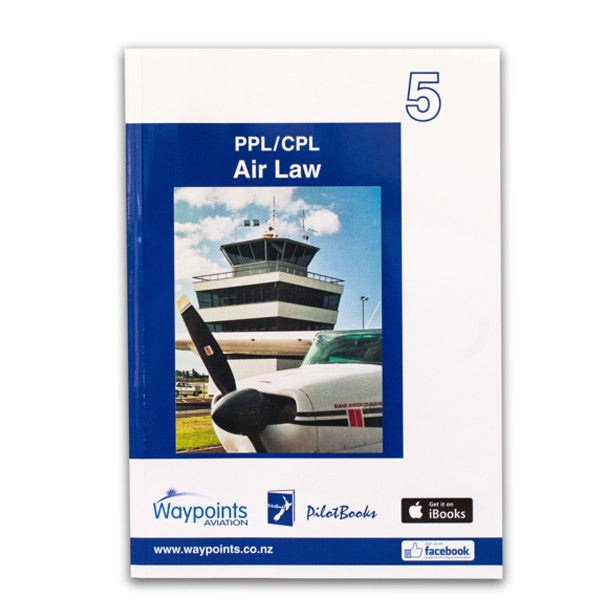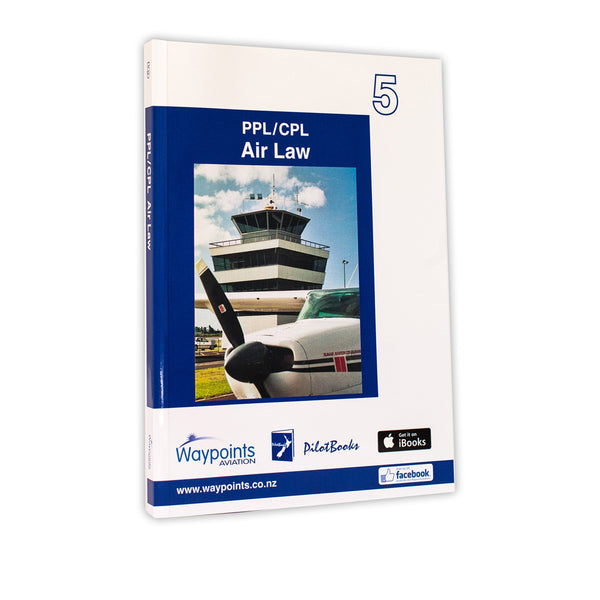

Vol 05: PPL/CPL Air Law (September 2024) - GST Excl
Quick Overview
Air Law is a subject that revolves around a number of documents such as Civil Aviation Rules, the Aeronautical Information Publication (AIP), the Civil Aviation Act and a few other legislative documents. The syllabuses for both aeroplane and helicopter Air Law, and references to the applicable documents, can be found on the CAA web site http://www.caa.govt.nz
Also available in iBook format
To download/buy the Vol 5 in iBook format, click here.
Details
The Private/Commercial Pilot Series - Volume 5, Air Law
Volume 5 covers, in plain language, most of the topics in the documents mentioned above but it cannot be expected to cover them all. Also, ASPEQ allows you to take the AIP Volume 4 into your exam sitting. Therefore, it is sensible that students have access to these documents, either through purchase or on loan from your training provider or friends. Whichever method is used, it is essential that the documents are of the latest edition.
The Waypoints Air Law manual summarises the many rules and regulations that apply to aviation, it does so in a logical order and in terms that are easy to understand. The book covers both the aeroplane and helicopter syllabuses, with "Helicopter Only" information indicated in the text. The book also covers Air Law for both the PPL and CPL syllabuses, so a vertical line is placed in the left or right margin to indicate text that applies to the CPL only. Therefore, students for the PPL only need to concentrate on unmarked blocks of text while CPL students should study the entire manual.
It is a feature of the aviation industry that rules and regulations are subject to regular change which requires many amendments to be made to our Volume 5. Often this involves updating text on a monthly basis.
Most paragraphs dealing with specific topics start with the official document reference. For example, Pilot-in-Command requirements are covered in Chapter 3, the text starts with CAR Part 61.37 which means the associated official document is Civil Aviation Rule Part 61. Or, Classification of Aerodromes is covered in Chapter 4 and the text starts with AIPNZ AD 1.4-2 which means the Aeronautical Information Publication, Aerodrome section, page 1.4-2. So it is a simple matter for students to read the text in Volume 5 and, when necessary, turn to the stated reference for more detailed information.
Volume 5 not only repeats and elaborates on many aspects of rules and regulations, it also gives practical advice wherever possible. In this fashion, the law is made more readable, practical and interesting.
Volume 5 is orientated towards New Zealand requirements and conditions, this aspect may not suit all overseas students unless some intend to do their subsequent training in New Zealand. Nevertheless there are many pages that contain material applicable to ICAO countries, in this regard Air Law is of substantial value.

